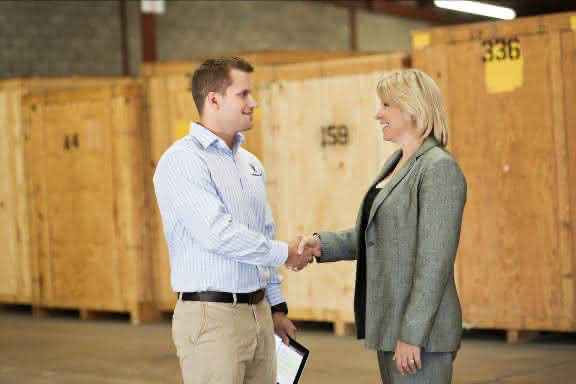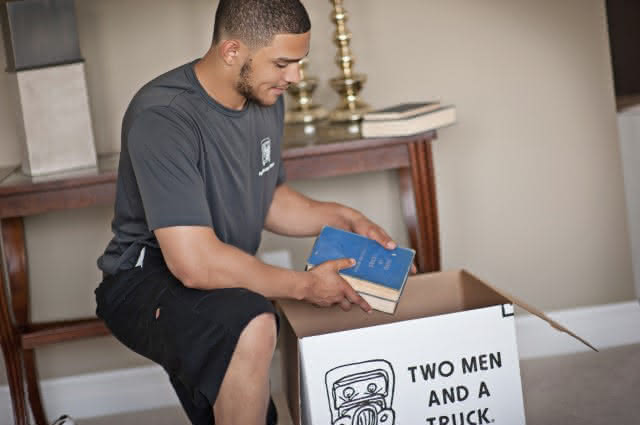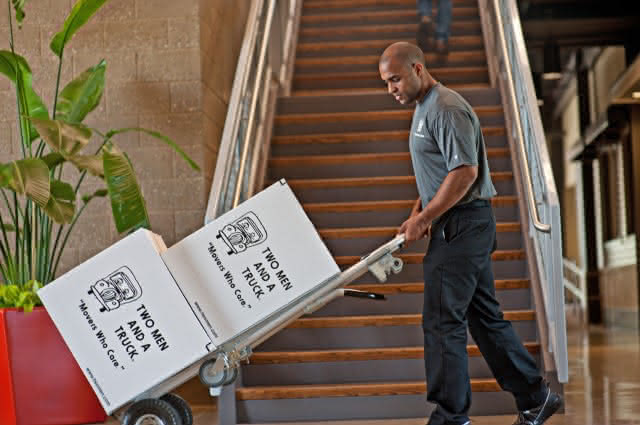When moving, it’s not uncommon to have families move items into storage as well as their new home. Whether it’s long-term or short-term, nearby or far away, we’ve compiled some tips to keep in mind if you plan to store items in the future:
Choosing a storage facility
Your first thought when choosing a facility should be on how long you anticipate your items will remain there, as well as the seasons and climate it will endure.
For long-term storage of more than three months, or if you plan to store items for changing seasons, a climate controlled storage facility is best. Although it can be more costly, it will provide you with a greater peace of mind as your items will have a much greater chance of not being damaged.
For short-term storage, of up to three months, a non-climate controlled unit will suffice; but we do recommend that you take precautions and look for ways to avoid mould and mildew from forming in the unit.
Note: If you’re storing items during the winter like televisions or computers, extremely cold temperatures can cause screens to freeze and break.
For an easy solution to your storage search, all TWO MEN AND A TRUCK ® locations offer on-site or off-site storage options. Simply call today to see what storage options are available at your closest location.
Check into insurance
As with any valuables, insurance is important with stored items. Even if the facility that you’re going to be storing your items looks ok, ask to see what their security is like, as well as what their history has been for weather damage, and any other kind of hazard.
Few facilities provide full insurance coverage for stored items, but we encourage you to ask. Some may provide basic insurance, but those insurance packages usually won’t cover the full cost of your items if damaged. If you do have an item that is worth a considerable amount to you monetarily or sentimentally, it may be worthwhile to purchase additional insurance.
Packing
- Clearly mark each of the boxes that you’re storing in the unit, while simultaneously creating a contents list. The list should give a detailed description of all of the items that are in the unit, as well as each of their monetary values. Keep a copy of this list with you, as well as a list in the unit so that you know of all the items that are there.
- When packing your furniture, clean each piece before storing it in a unit to help prevent any mould growth. This means cleaning fabric chairs, sofas and mattresses. Then wrap each item in plastic or some sort of covering.
- If it’s possible, disassemble tables and bed stands before loading them into the unit or moving truck. Disassembling these items will help you to maximize the space you will have in both your truck and your unit.
- If you can, place any electronics like a flat screen tv in their original packaging. Electronic items like TV’s can easily be damaged, so it’s important to make sure they’re packed safely with a towel or a sheet and are placed upright to avoid being damaged.
Preparing the storage unit
- Before you begin putting items in your unit, we recommend that you first get plastic sheeting or wooden pallets for the floor. Laying each of these items down will help to keep any moisture at bay in the unit.
- If you plan to have items in storage for a long period of time (more than three months), it may be wise to invest in some quality fabric covers for your furniture and appliances. You can use items like blankets and plastic, but investing in some high-quality fabric covers will help to keep your items safe longer.
- When storing any furniture like washers, refrigerators and other appliances, be sure to remove all of the water before you store it. In the winter, the water can freeze and can affect the internal mechanisms in each of these appliances.
- Purchase an inexpensive step stool or ladder to keep in the unit to make stacking and unstacking taller items easy and safe.
Unloading
- Unload the heavier items that you won’t use often like appliances in the back. This will allow you to easily access other items that you may use more regularly.
- Prop freezers and refrigerator doors slightly ajar to prevent the growth of moulds and odours. Adding a box of baking soda in each appliance will also help to reduce any other odours.
- For long-term storage, remove any plastic wrap that’s been used to seal doors and drawers closed during the move. Plastic prohibits air flow and can trap moisture and heat, causing warping or mould.
- Box up or cover everything you can with moving blankets or sheeting to prevent dust and dirt from collecting.
- Although tempting, do not place items on sofas; the long-term weight will stress the joints and can cause the frame and cushions to sag.
- Be creative when you’re looking to maximize the amount of space that you have in your unit. Fill dressers with clothes; suitcases with linens, and bookshelves with small boxes.
Once you’ve unloaded all of your items, take photos and a video of your storage area. Add this to your content list, so that you have a visual outline of your unit, as well as copies in case you need to file an insurance claim.


